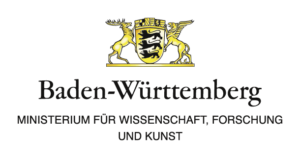How did people sacrifice to the gods during the Early Iron Age?
During the Early Iron Age (500 B.C.–400 A.D.), people sacrificed mainly by placing the offerings in the water of bogs or lakes. To sacrifice in wetlands is a tradition which goes back to the Neolithic. Several types of offerings were presented to the gods like food, sometimes in pots, beautiful jewellery, like gold neck rings or bracteates, but also farmer’s tools (Lake Käringsjön in the Swedish province of Halland). In some sacrificial bogs/lakes also white stones or hazel rods have been found, indicating that these also had a religious function.
The gods also received offerings of weapons and whole personal equipments of conquered armies. The sacrificed Nydam ship from what is today northern Germany, is supposed to be a ship in which warriors have arrived to the battle field. In addition, animals were sacrificed. At Skedemosse, a sacrificial lake in the Swedish province of Öland, at least 100 horses, 80 cows and 60 sheep and pigs have beed discovered. Finally, also human sacrifice were carried out. Examples of these are the well-preserved corpses found Danish and north German bogs, for ex. the Grauballe man. Probably animals were sacrificed to the fertility gods while weapons were sacrificed to the god of war as an act of gratitude for the victory.
Early Iron Age sacrifices were probably characterized by huge public manifestations in the shape of a big fiest where all participants ate from the meat of the sacrificed animals. The gods received what people could not eat like animal heads and hoofs. Offered weapons were often ritually destroyed at the sacrificed.
There are also signs of sacrifices on dry land during the Early Iron Age, both from Roman authors like Tacitus, but also in some archaeological evidence, for example from Halland, a west Swedish province. Sacrifices on dry land became common in the Late Iron Age.
Jan Olofsson, Eketorps Borg (SE)
Hur offrade man till gudarna under äldre järnålder?
Under äldre järnålder (500 f.Kr–400 e.Kr) offrade man främst genom att lägga gudagåvorna i mossar och sjöar. Att offra i våtmarker går ända tillbaka till bondestenåldern. Man har offrat många olika typer av saker till gudarna: mat, ibland i krukor, vackra smycken bl a guldhalsringar och brakteater, men också jordbruksredskap (Käringsjön i Halland). På vissa offerplatser hittas hasselkäppar och vita stenar vilka haft religiös betydelse.
Gudarna fick också offer av vapen och krigsbyten, ja utrustningar från hela besegrade arméer har hittats. Det offrade Nydamskeppet från dagens Nordtyskland antas vara det skepp som krigarna kommit i. Dessutom offrades djur. I Skedemosse på Öland har man hittat rester av offer av ca 100 hästar, ca 80 kor och 60 får och grisar. Slutligen förekom också människooffer. Exempel på dessa är de danska och nordtyska mossliken, bl a Grauballemannen. Förmodligen offrades djur till fruktbarhetsgudarna, medan vapen offrades till krigsguden som tack för seger.
Offren verkar ha haft karaktären av stora offentliga manifestationer med fester då man gemensamt åt köttet av de djur som skulle offras. Gudarna fick det som människorna inte åt såsom djurhuvuden och hovar. Vapnen som offrades har ofta rituellt förstörts vid offret. Tecken på att även offer på torra land förekom under äldre järnålder finns både från romerska författare, t ex Tacitus, samt i en del arkeologiska belägg från Halland i västra Sverige. Offer på torra land blir emellertid allt viktigare och är välkända från yngre järnålder.
Jan Olofsson, Eketorps Borg (SE)






